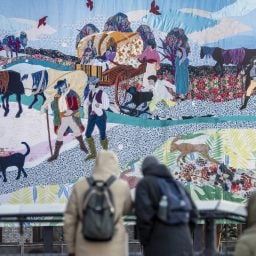The Roma people of Europe have long been disenfranchised, discriminated against, and excluded from public life—and their experiences in the art world have been no exception. That’s why it’s especially profound and urgent that not one, but two pavilions at the 2022 Venice Biennale deal directly with Romani experiences.
At the Polish Pavilion, artist Małgorzata Mirga-Tas has become the first Roma artist ever to take over a national biennale pavilion in the show’s 150-year history. And at the Greek pavilion, a surrealist VR film by Greek artist Loukia Alavanou transports viewers through a Roma settlement outside of Athens.
“It’s truly a historical moment,” said Polish pavilion co-curator Joanna Warsza at the unveiling of the presentation.
Mirga-Tas’s exhibition, “Re-enchanting the World,” is a triumphant celebration of Roma life and history. Massive and vividly colored fabric and hand-stiched panels adorn the majestic exterior of the pavilion as the floor to ceiling inside are filled work images.
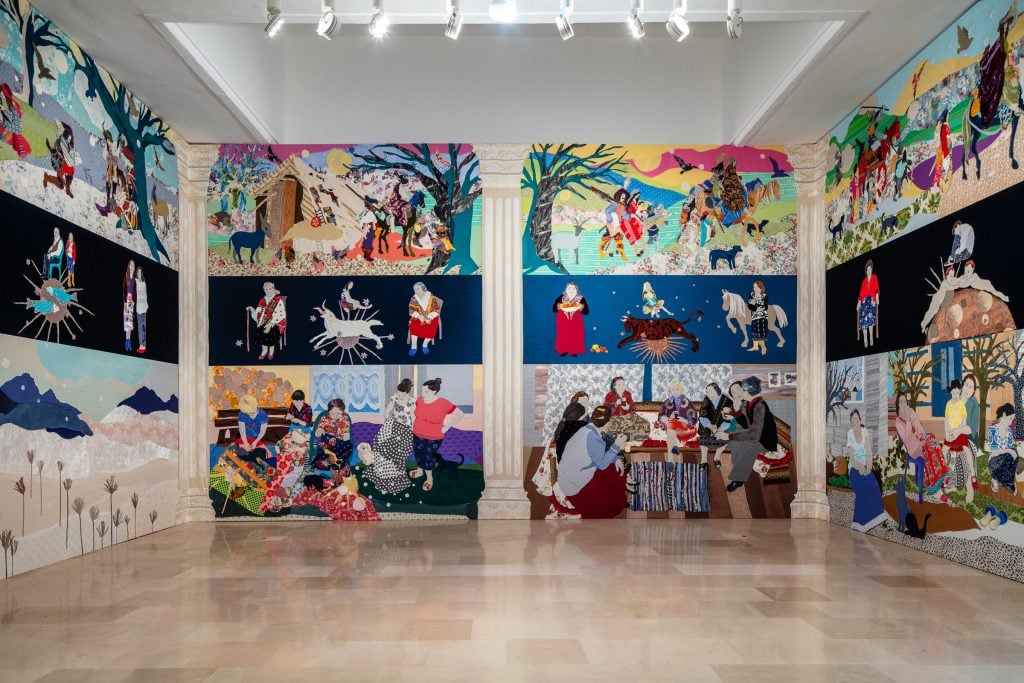
Małgorzata Mirga-Tas, Re-enchanting the World, exhibition view, Polish Pavilion at the Biennale Arte 2022. Photo: Daniel Rumiancew. Images courtesy Zachęta — National Gallery of Art
The three tiers of panels represent 500-year old frescos at Palazzo Schifanoia in Ferrara, Italy. Mirga-Tas reinterprets this historic format to focus on her own people, who are almost entirely absent from Western art.
She included on the upper panel depictions of Roma migrations across Europe, appropriating some image of Roma people that did make it into art history: disparaging images made by printmaker Jacques Callot in the 17th century. She transforms these into truthful and poignant celebrations of the nomadic Romanis’ diasporic history.
“For much of history, we never created images of ourselves,” Mirga-Tassaid. “It is very symbolic for me. It is not only about me as a Polish-based Roma artist, but it is about my whole community. I am here as a representative.”
She made the works with reused garments and the help of family members and women in her community of Czarna Góra, a village at the foot of the Tatra Mountains in Poland.
“We have had to deal with stereotypes about what Roma artists are and where Roma artists are entitled to display their work,” Warcaw said at the unveiling. “This is about pride in the concept of being a Roma human being.”
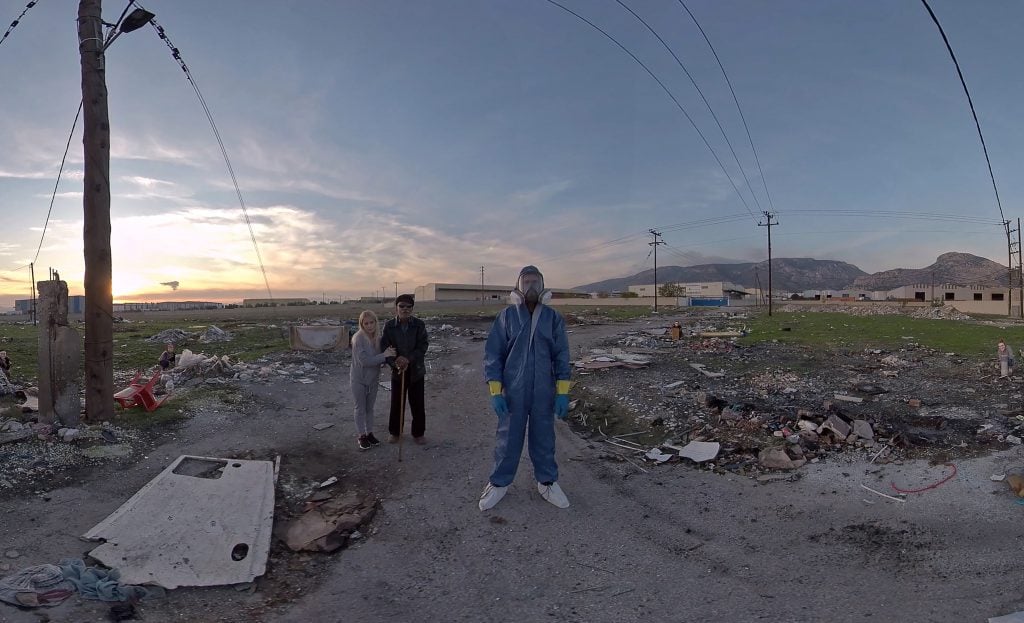
Loukia Alavanou “On The Way to Colonus,” VR360, 2020 stills. © Loukia Alavano
At the nearby Greek pavilion, Alavanou’s show, “Oedipus in Search of Colonus,” tries to bring viewers into proximity with Romani experience with an entirely different aesthetic and tone.
The powerful VR presentation, curated by Heinz Peter Schwerfel, juxtaposes Greek classical mythology with the realities of life for Roma. It also offers an unusually intimate interaction.
The artist, who is not of Roma descent, transformed the normally bright pavilion into a cavernous domed room with more than a dozen VR headsets. The 16-minute film drops viewers into a Roma settlement in Athens called Neo Zoi, which translates to new life. Despite the town’s name, the people in it live in impoverished conditions. It was settled after World War II by Romanis who had survived the Nazi’s brutal persecution.
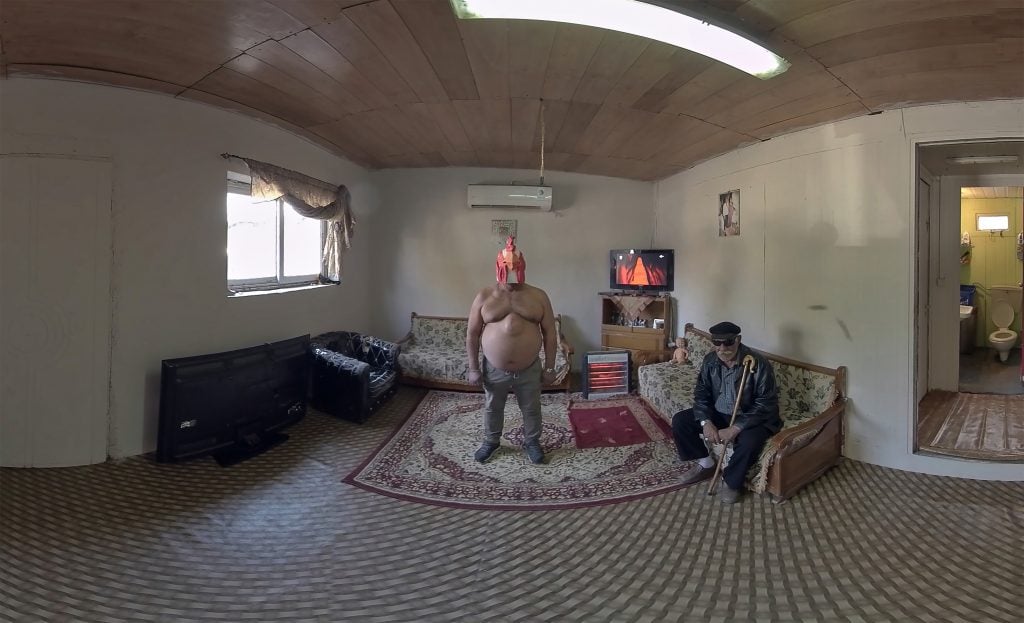
Loukia Alavanou’s On The Way to Colonus (2020), stills. © Loukia Alavano
“It was a complete coincidence that I found Neo Zoi,” Alavanou said. “It changed my life.”
Though it has been there for decades, it is virtually unknown to Greeks like her who live just 20 kilometers away.
Using this setting, Alavanou reinterprets the Sophoclean drama Oedipus at Colonus using a cast of amateur local Roma actors. The actors recreate the story of the exile of Oedipus and how it raises questions regarding belonging, life, and death.
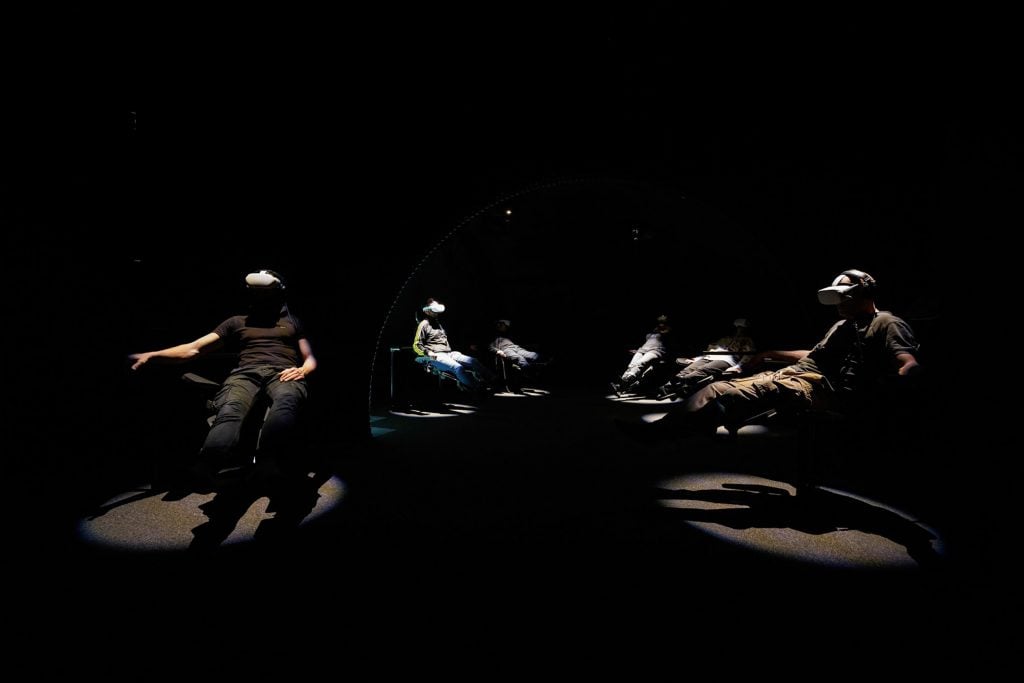
Loukia Alavanou. Courtesy La Biennale di Venezia Photo: Jacopo Salvi
The VR pans through the settlement, making viewers into eyewitnesses of a modern-day Oedipus and Antigone, played by two amateur Roma actors. Children from the settlement don Greek chorus-like masks, which Alavanou incporprates convincingly using high-tech immersive video and surreal imagery.
“‘Oedipus in Seach of Colonus’ may be a journey through time from the past to the present,” Schwerfel, the curator, said. “But that journey is also a carousel that rotates around its own axis by definition, just like art.”
![Malgorzata Mirga-Tas, Phuter o Jakha [Open your eyes] detail (2020). Courtesy of the artist. Photo: Marcin Tas. Malgorzata Mirga-Tas, Phuter o Jakha [Open your eyes] detail (2020). Courtesy of the artist. Photo: Marcin Tas.](https://news.artnet.com/app/news-upload/2022/01/BB11-Małgorzata-Mirga-Tas_05-scaled-1024x872.jpg)






